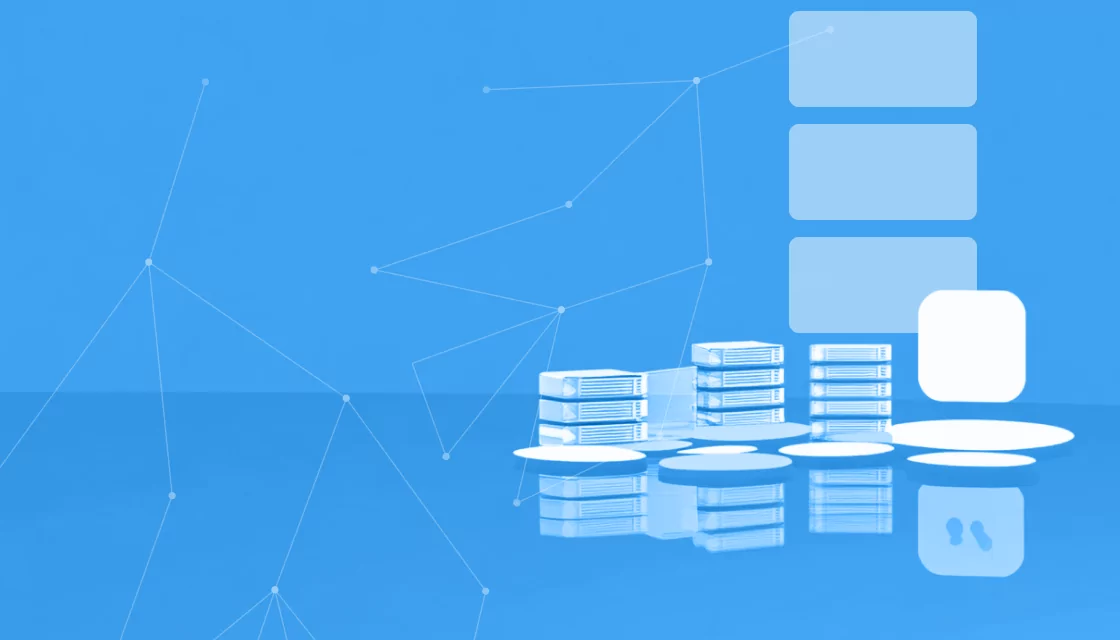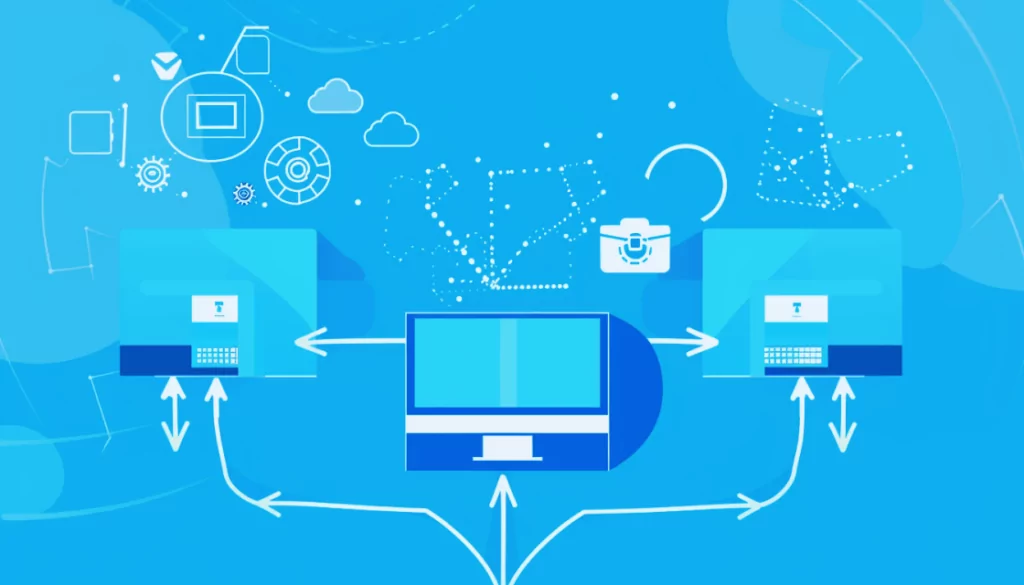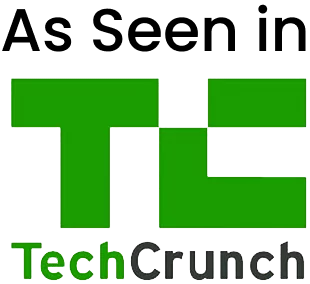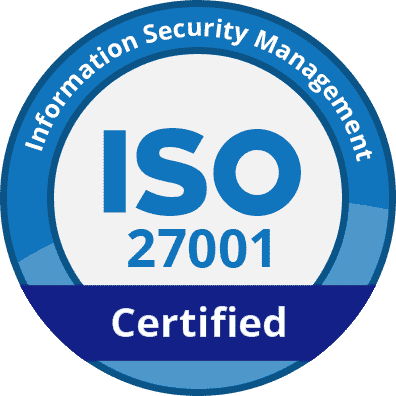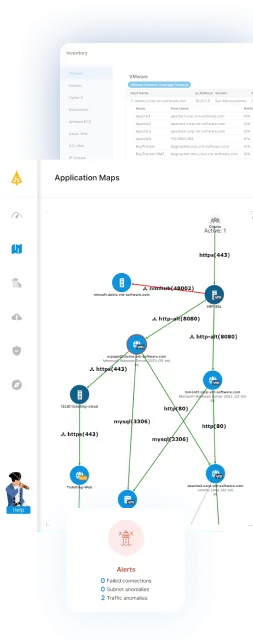What Is IT Change Management?
IT change management is a structured approach that governs modifications to IT infrastructure, processes, or services. It ensures changes are made systematically while minimizing the negative impact on service delivery. This includes planning, testing, implementing, and reviewing changes.
IT change management processes require coordinated efforts across various teams to integrate changes. This coordination prevents disruptions and ensures a stable IT environment. By providing a clear framework for handling changes, organizations can better adapt to evolving technologies and market demands.
Table of Contents
Toggle- What Is IT Change Management?
- Why Do You Need an IT Change Management Template?
- Types of Changes in IT Environments
- Key Components of an IT Change Management Template
- Tips from the Expert
- Examples of IT Change Management Templates
- Best Practices to Use IT Change Management Templates
- Supporting IT Change Management with Faddom
Why Do You Need an IT Change Management Template?
Organizations use IT change management templates for several reasons:
- Simplifies change processes: Templates create a consistent format for documenting and managing changes, simplifying workflows and enabling teams to execute modifications more efficiently. This structured approach reduces ambiguity, making it easier for IT staff to follow procedures without missing critical steps.
- Reduces risk and improves compliance: By standardizing documentation and approval requirements, templates help teams identify potential risks early and ensure compliance with organizational policies and regulatory standards. This minimizes the chances of errors or unauthorized changes, protecting the IT environment from disruptions.
- Improves communication and collaboration: Templates ensure that essential information, such as change scope, objectives, and impact, is clearly communicated across teams. This encourages coordination between departments, as everyone has access to the same, well-organized data.
- Supports audits and accountability: With a documented record of changes and approvals, IT change management templates provide a transparent history of modifications. This helps organizations meet audit requirements, track accountability, and demonstrate due diligence in managing IT systems over time.
- Supports faster decision-making: By providing a clear and uniform format, templates allow decision-makers to quickly assess change requests and their associated risks. This enables faster approvals and prioritization, helping organizations respond more rapidly to routine and urgent IT needs.
- Enhances continuous improvement efforts: Well-documented change management templates offer insights into past implementations, enabling IT teams to analyze outcomes, identify recurring issues, and refine processes.
Types of Changes in IT Environments
A change management strategy typically categorizes IT changes into three levels of urgency and complexity.
Standard Changes
Standard changes are pre-approved modifications with well-documented processes and predictable outcomes. These changes are often low-risk and recur frequently, such as software updates or routine maintenance. Since they follow established procedures, standard changes do not require full change management board approval but still adhere to organizational protocols to ensure consistency.
Emergency Changes
Emergency changes address critical issues requiring immediate resolution to prevent substantial damage or service disruption. These changes bypass the usual approval processes due to their urgent nature, but must still be recorded for accountability. Emergency changes, like system failures or security breaches, require quick reactions to restore functionality swiftly.
Normal Changes
Normal changes are planned modifications that fall between standard and emergency changes in terms of risk and complexity. These changes are neither routine nor critical, but they require assessment and approval processes. Normal changes follow a structured workflow, including submission, evaluation, scheduling, and implementation of the change.
Key Components of an IT Change Management Template
An effective IT change management plan should include the following components.
Change Request Form
The change request form documents the need for change and includes details such as the change’s purpose, scope, and expected outcomes. The form ensures all relevant information is considered, promoting transparency and accountability. It also helps prioritize and align changes with organizational objectives.
Change Impact Assessment
The change impact assessment evaluates potential effects of a proposed change on the organization. It identifies risks, resources needed, and possible disruptions, helping decision-makers understand ramifications before implementation. An assessment includes technical, financial, and operational considerations to ensure thorough analysis of the proposed change.
Change Implementation Plan
A change implementation plan outlines step-by-step procedures for making the change, including timelines, resource allocations, and task assignments. This plan serves as a guideline, ensuring that all team members understand their roles and responsibilities throughout the implementation phase. It also includes contingency strategies to address potential issues during deployment.
Communication Plan
A communication plan outlines strategies for disseminating information to stakeholders and teams, detailing how updates, objectives, and feedback are shared. This enables transparency and ensures all parties are informed and aligned with the process. The communication plan should include various channels such as emails, meetings, and documentation.
Change Log
A change log systematically records every change made to IT systems, providing a historical archive for future reference. It includes details like dates, descriptions, outcomes, and authorizations, allowing organizations to track the progress and impact of each change. This documentation promotes accountability and supports audits.

Lanir specializes in founding new tech companies for Enterprise Software: Assemble and nurture a great team, Early stage funding to growth late stage, One design partner to hundreds of enterprise customers, MVP to Enterprise grade product, Low level kernel engineering to AI/ML and BigData, One advisory board to a long list of shareholders and board members of the worlds largest VCs
Tips from the Expert
In my experience, here are tips that can help you better leverage IT change management templates:
- Tailor templates to fit different business units: While standardization is essential, consider minor adaptations for templates used by distinct business units (e.g., finance vs. development teams) to capture unique requirements or risks relevant to their operations.
- Embed automated notifications within templates: Integrate notifications for stakeholders when specific sections, like risk assessments or approvals, are completed. This ensures everyone remains updated on progress and reduces delays caused by waiting for updates.
- Assign risk categories within the change log: Besides just logging each change, tag entries with a risk category (e.g., low, medium, high) based on impact assessment outcomes. This helps track risk patterns over time and informs future change planning.
- Create a historical data insights section: Include a section in templates for past similar changes, capturing lessons learned and outcomes. This is especially useful for recurring changes, allowing teams to quickly assess what worked or failed in prior instances.
- Create a post-implementation monitoring template: After a change is made, implement a monitoring template to track any unexpected impacts or adjustments needed. It should include fields for metrics, key performance indicators (KPIs), and stakeholder feedback to ensure the change achieves its intended results.
Examples of IT Change Management Templates
Here’s a look at a few ways an organization might implement a change management strategy.
1. Change Proposal Template
A Change Proposal Template is a structured document designed to capture and organize essential information about a proposed IT change. This template helps guide the process of change approval, impact assessment, resource allocation, and communication across relevant teams.
Template source: Smartsheet
File format: Web page
Template fields:
- Project Information: Project name, manager, organization, creation date, version date, version number.
- Case for Change: Overview of the proposed change, reasons for the change, intended outcomes, estimated timeframes, and additional considerations.
- Estimated Costs: Summary of projected costs and benefits, with breakdowns for resources and timelines.
- Stakeholder Impact: Analysis of how the change will affect stakeholders, noting both benefits and potential adverse impacts.
- Staff & Operations Impact: Potential impacts on processes, technology, and structure, listing benefits and possible disruptions.
- Structural Changes: Details on structural adjustments (e.g., new roles, redundancies) with effective dates, costs, and expected savings.
- Approval: Signatures from proposing, consulting, and approving authorities.
- Additional Comments: Space for extra remarks, feedback, or conditions.
Source: Smartsheet
2. ITSM Change Management Template
An IT Service Management (ITSM) Change Management Template provides a structured approach to documenting, implementing, and reviewing IT changes. It supports efficient communication, risk management, and accountability throughout the change process. This management template integrates best practices for handling IT changes within the broader service management framework.
Template source: Atlassian
File format: Wiki page
Template fields:
- Summary: Brief change summary and completed tasks.
- Change Details: Links to change request, status, related issues, driver, impacted services, blockers, reviewers (service & technical), reporter, approvers, and stakeholders.
- Change Plans: Plan type (e.g., test, rollback), steps, impact, risk, and schedule.
- Implementation Tasks: Task type (outage/no impact), team, and description.
- Communications: Involved team, escalation manager, testing (required/optional), testing manager, and contact info.
- Post-Implementation Review: Review date, RFC link, service owner, participants, review criteria, lessons learned, and follow-up actions.
Source: Atlassian
3. Change Request Form Template
A Change Request Form Template is a structured document that allows teams to formally request, evaluate, and track proposed changes in an IT project or service. This form facilitates a consistent approach to change requests, helping organizations assess the necessity, impact, and resources required for a change.
Template source: Smartsheet
File format: Web page
Template fields:
- Project Information: Project name, manager, change request number.
- Change Request: Requestor name and contact, date, priority, item to be changed, change description, timeline, and estimated costs.
- Change Evaluation: Evaluator name, evaluation date, expected outcome, work required.
- Impact Assessment: Areas affected (scope, schedule, cost, quality), impact description, and severity rating.
- Change Review / Approval: Reviewer name, signature, status (Accepted/Rejected), review date, and additional comments.
- Change Tracking: Tracking agent, last updated date, version number, and space for tracking comments.
Source: Smartsheet
4. Change Impact Assessment Template
A Change Impact Assessment Template is designed to evaluate the potential effects of a proposed change on an organization. It helps identify the current and desired states, assess risks, and define requirements to manage the change effectively.
Template source: Smartsheet
File format: Web page
Template fields:
- Project Information: Project name, project manager, organization, creation date, last revision date, and version number.
- State of Event / Action / Strategy:Current state, target state, gaps addressed, key risks.
- Impact Summary: Overview of change impact on organization, employees, processes.
- Impact Details: Type, timeline, severity, affected roles, number impacted.
- Requirements: Communication, training, leadership, stakeholder collaboration.
Source: Smartsheet
Best Practices to Use IT Change Management Templates
Organizations should implement the following practices to ensure proper management of their IT environments.
Standardize Templates Across the Organization
When all teams use the same templates, it reduces confusion and minimizes errors, as everyone follows the same documentation structure and workflow. This uniformity also helps with training and onboarding, as new team members can quickly become familiar with the template format and requirements.
Standardization promotes a shared understanding of the information needed for each change type, such as impact assessments, risk evaluations, and implementation steps. By applying a standardized approach, organizations simplify the change process, improving efficiency and enabling better collaboration across departments.
Ensure Comprehensive Documentation
Each template should capture all necessary information, from the change description and rationale to anticipated risks, affected systems, and contingency plans. Ensuring thorough documentation provides a complete record that stakeholders can reference throughout the change lifecycle, supporting clear communication and informed decision-making.
Complete documentation also aids in compliance and audit readiness by providing a detailed account of past changes. It allows IT teams to analyze previous implementations, learn from successes and failures, and apply these insights to future changes.
Learn more in our detailed guide to IT documentation
Incorporate Approval Workflows
Each template should include designated sections for documenting approvals from relevant stakeholders, such as department heads or change advisory boards. This ensures that all changes are reviewed for potential risks, resource requirements, and alignment with organizational goals before implementation.
Structured approval workflows prevent unauthorized changes and promote accountability. By involving appropriate decision-makers, organizations can better assess the impact of each change, minimizing the risk of disruptions. Clear workflows also speed up the approval process, making it easier for teams to track and manage change requests.
Regularly Review and Update Templates
Regularly reviewing and updating IT change management templates keeps them aligned with evolving organizational needs, regulatory requirements, and industry best practices. As IT environments grow more complex, templates should be refined to reflect current processes, technologies, and security protocols.
Scheduled reviews allow organizations to incorporate feedback from users, adjust for gaps, and ensure templates remain relevant. Outdated templates can lead to inefficiencies and risks, so periodic updates are essential for maintaining an effective change management process.
Integrate Templates with Change Management Tools
Integrating IT change management templates with change management tools, such as ITSM platforms, improves automation, tracking, and collaboration. This integration allows teams to access, fill out, and submit templates within a centralized system, improving visibility and reducing manual tasks.
Automated workflows enable efficient tracking of change requests, approvals, and implementation statuses, helping teams manage the entire process. This integration also supports reporting and analytics, enabling organizations to identify trends, monitor compliance, and optimize the change management process.
Supporting IT Change Management with Faddom
Effective IT change management relies on clear visibility into your IT infrastructure, accurate documentation of dependencies, and the ability to assess the impact of changes in real-time. Faddom’s application dependency mapping solution simplifies this process by providing:
- Comprehensive Visibility: Faddom automatically discovers and maps dependencies across your hybrid IT environment, ensuring you have a complete view of your infrastructure before implementing changes.
- Impact Analysis: Understand the ripple effects of proposed changes on interconnected systems, reducing the risk of service disruptions and ensuring smooth implementation.
- Streamlined Documentation: Faddom generates detailed, continuously updated maps that serve as accurate documentation for audits, compliance, and future planning.
- Fast Deployment: With Faddom, you can start mapping your IT environment in under 60 minutes—no agents required.
Integrating Faddom into your IT change management process can enhance collaboration, reduce risk, and ensure a stable IT environment that supports your organizational goals.
Start your free trial today and learn how Faddom can transform your IT change management practices!
